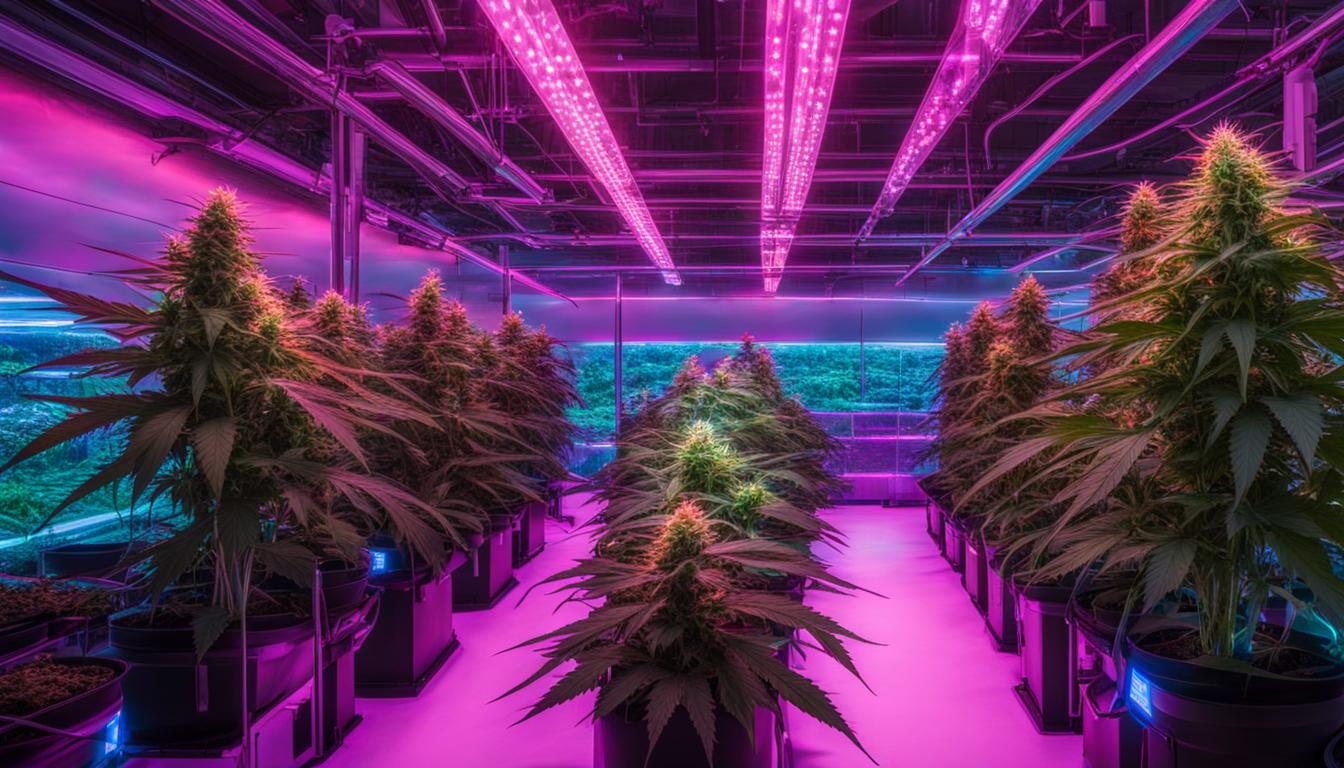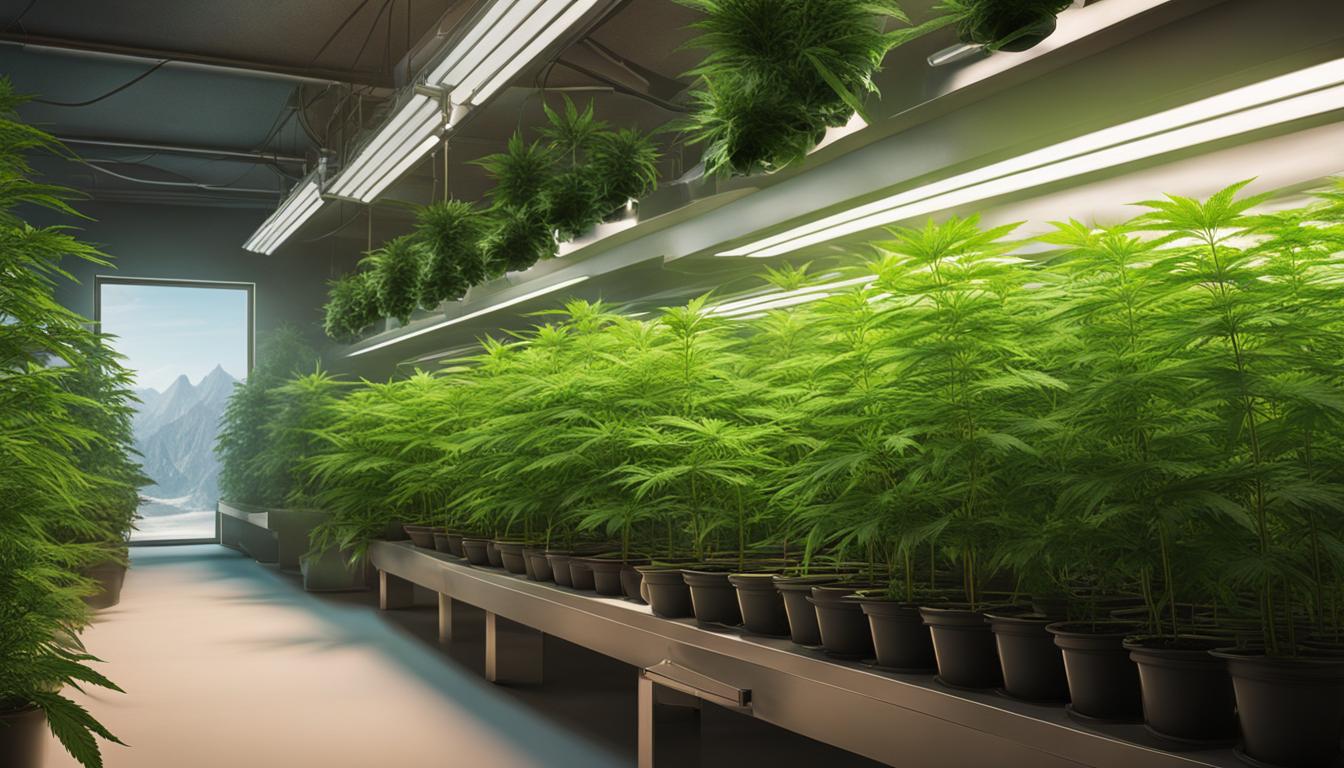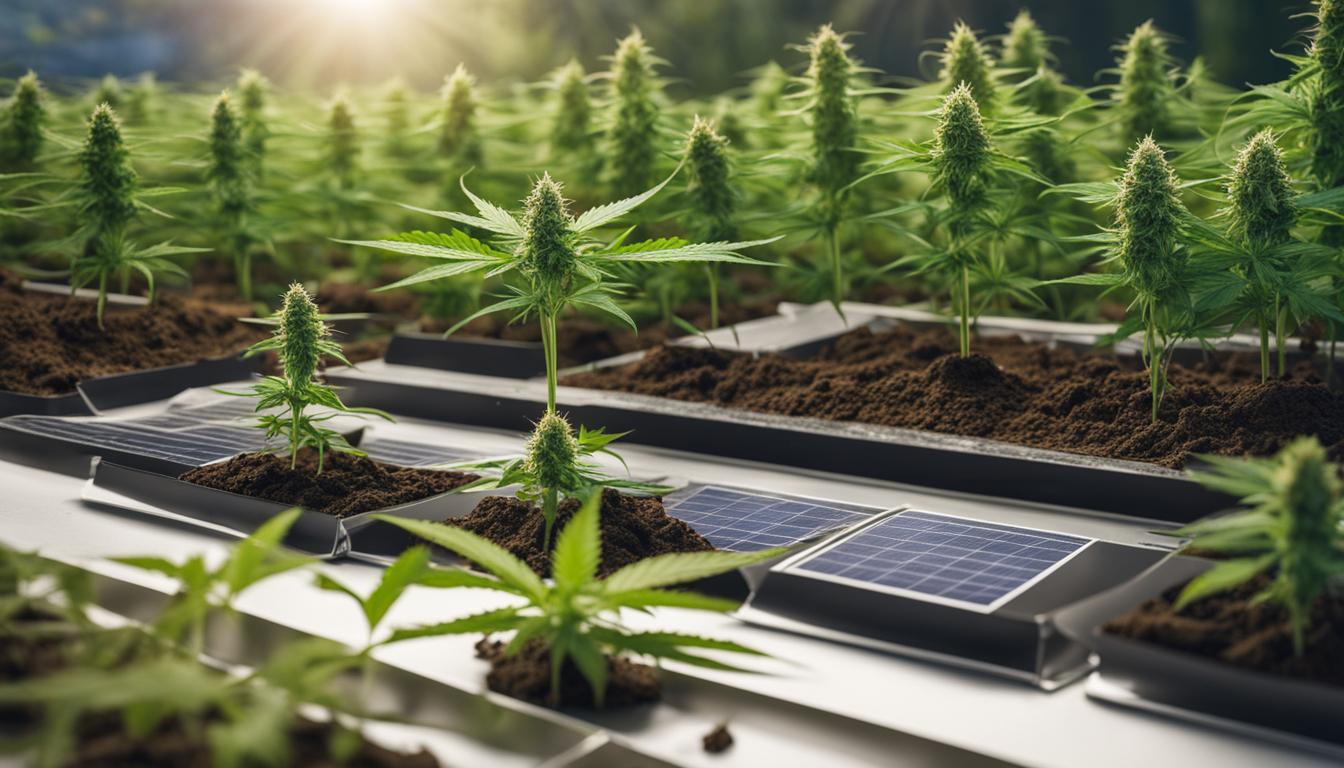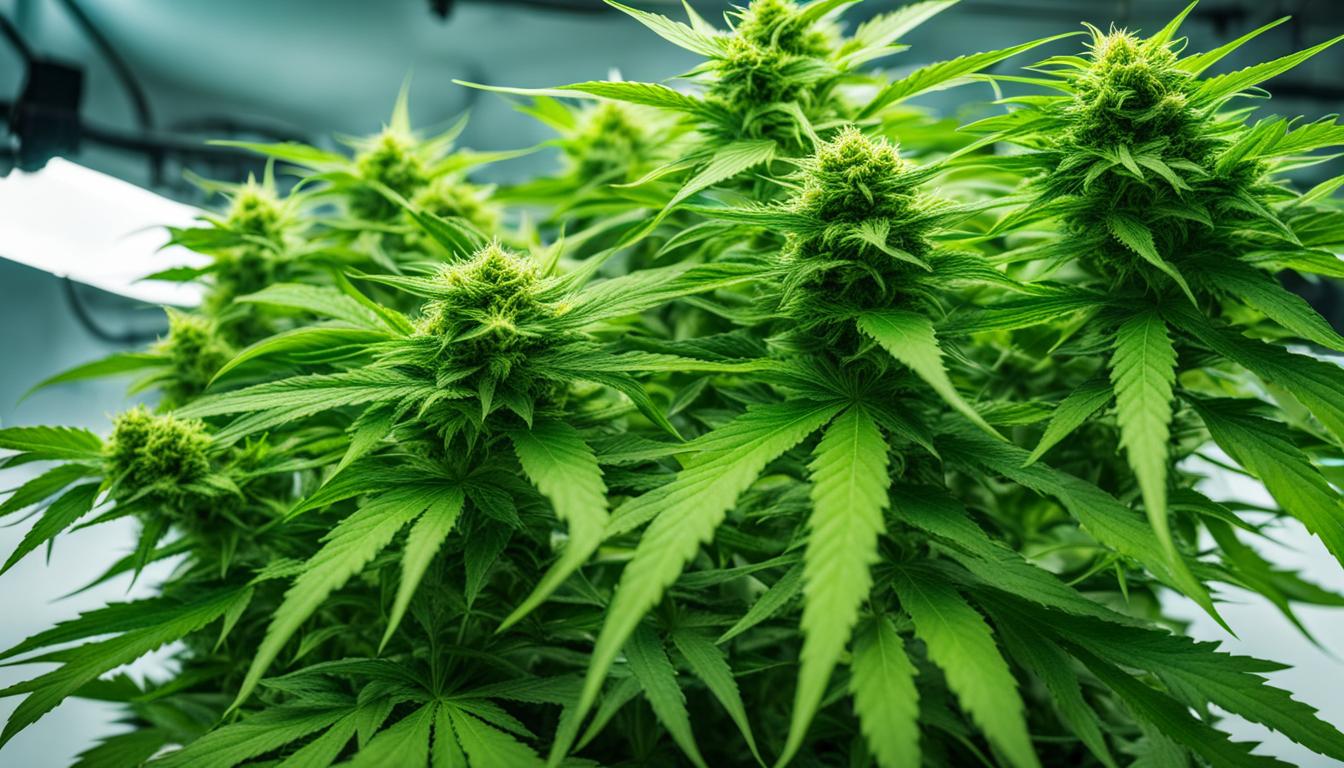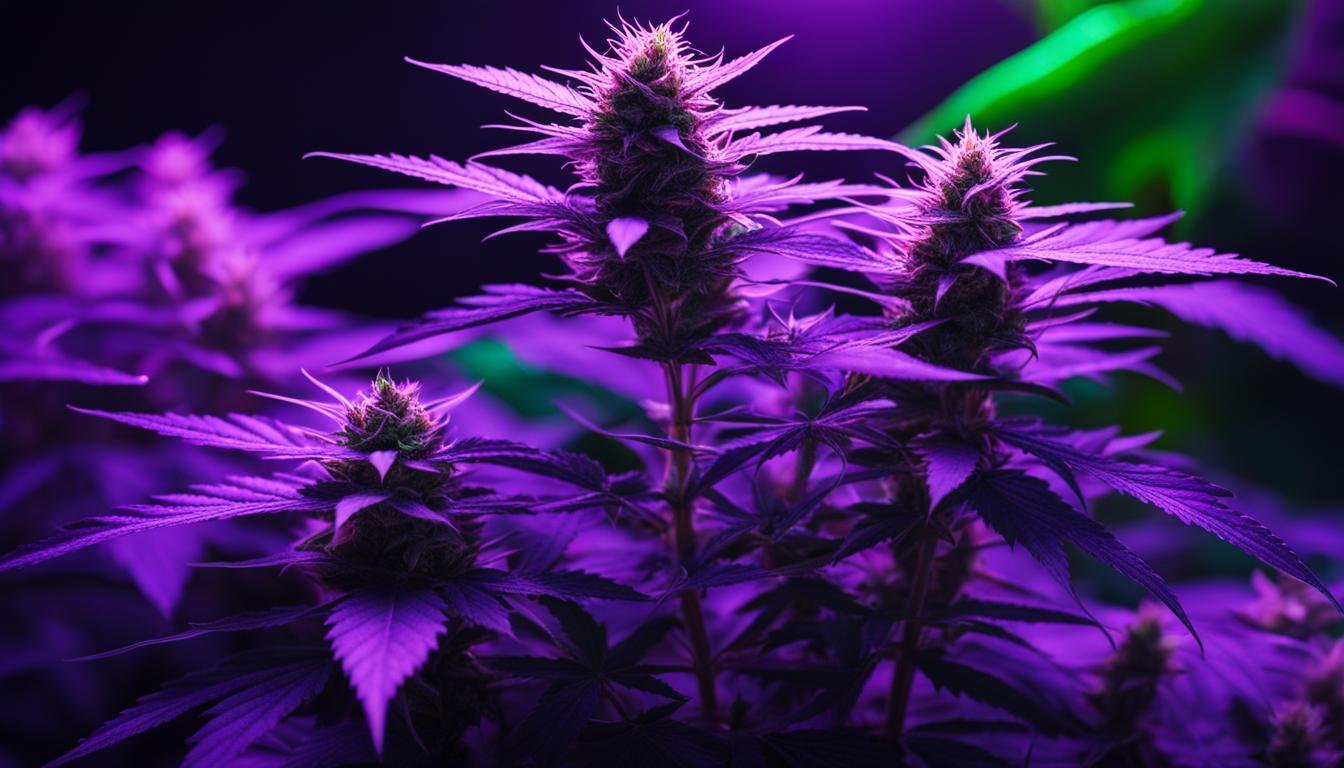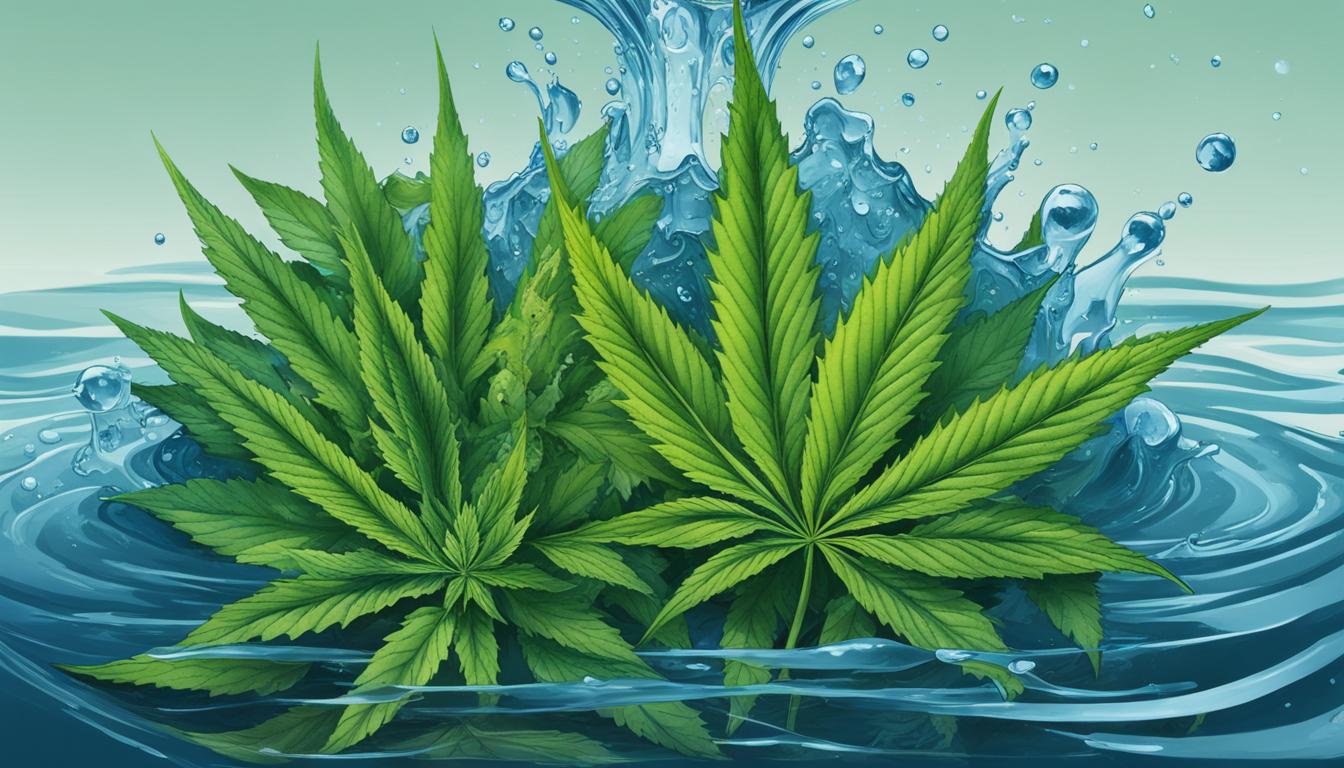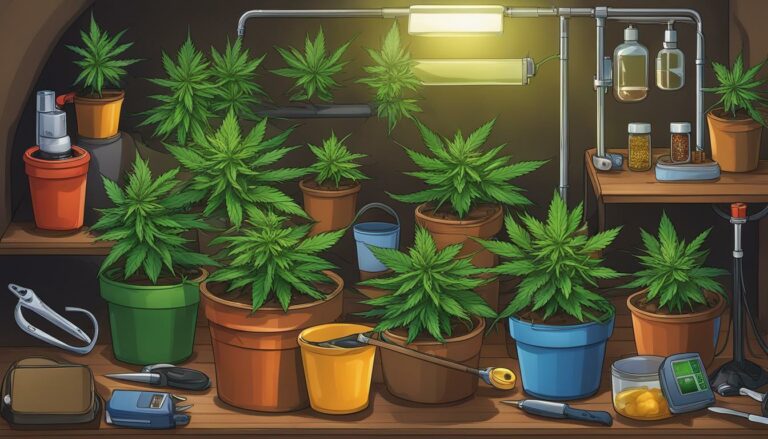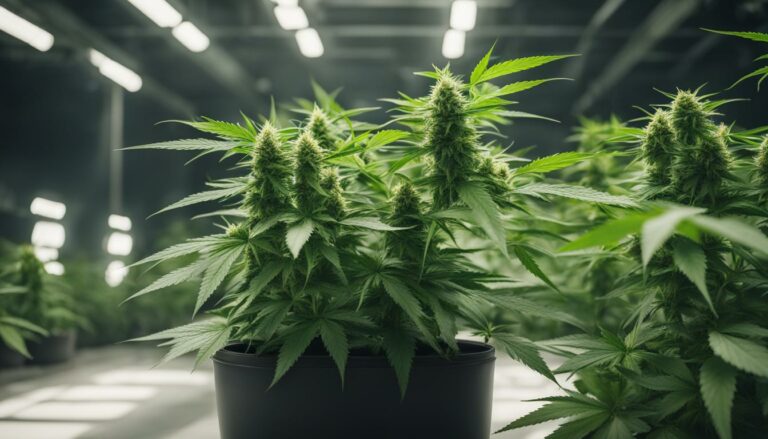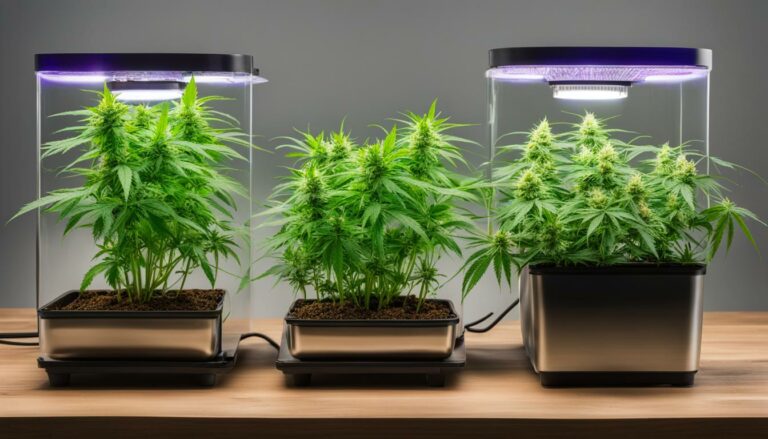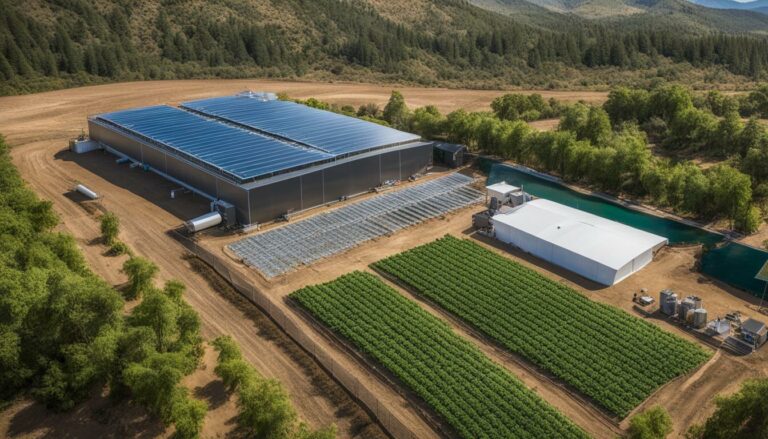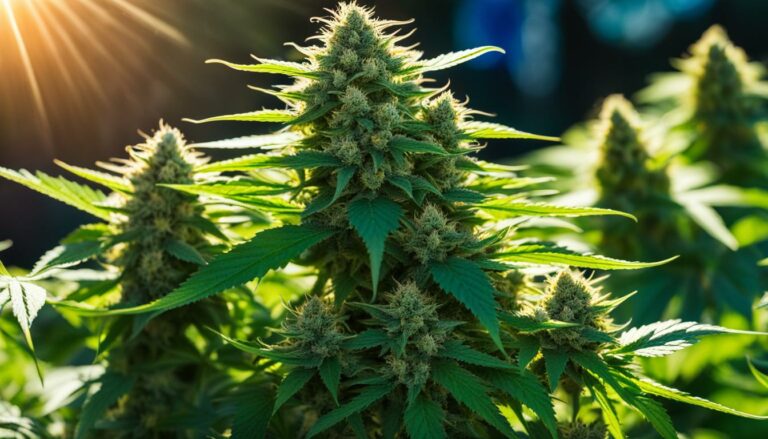The Evolution of Cannabis Cultivation Techniques
Welcome to our exploration of the Cannabis Cultivation Evolution. In this article, we delve into the fascinating journey of cannabis growing methods, from its humble beginnings to the modern cannabis cultivation techniques used today.
Over the years, cannabis cultivation has undergone a remarkable transformation, propelled by technological advancements and changing perspectives. From the early days of hemp cultivation to the rise of indoor growing, the industry has continually adapted to meet the demands of an evolving world.
Join us as we unravel the historical context, explore the revolutionary methods employed by cannabis growers, and discuss the future of cultivation. Whether you are a seasoned enthusiast or simply curious about the world of cannabis, this article promises to provide valuable insights into the intriguing world of modern cannabis cultivation techniques.
The Early, Early Years of Cannabis Cultivation
For thousands of years, cannabis cultivation was a low-tech endeavor focused on producing hemp for industrial purposes and marijuana for therapeutic or recreational use. The cultivation of cannabis dates back to ancient civilizations, with historical evidence suggesting that it was first cultivated in Asia around 7,000 to 8,000 years ago. From there, it spread to other parts of the world, including Europe and the Americas.
Hemp cultivation was particularly prevalent in Europe during the Middle Ages, where it was used for a variety of purposes, including making textiles, rope, and paper. In fact, hemp was so important during this time that in some countries, farmers were required by law to grow it. The fibers of the hemp plant were used to make sails, clothing, and even the Gutenberg Bible.
In addition to hemp cultivation, marijuana, with its psychoactive properties, was also cultivated and used for various purposes. Ancient civilizations recognized its therapeutic benefits and used it for spiritual rituals, medicinal purposes, and recreational enjoyment. The cultivation and use of marijuana continued throughout history, with different cultures employing different cultivation techniques and utilizing the plant in various ways.
The Evolution of Cannabis Cultivation Techniques
Over time, cannabis cultivation techniques evolved as new knowledge and technologies emerged. For example, in the 19th century, the development of the hemp decorticator improved the efficiency of processing hemp fiber, making it easier to extract the plant’s valuable fibers. However, with the prohibition of all cannabis cultivation in 1937, technological advancements in cannabis cultivation came to a halt.
| Time Period | Key Developments |
|---|---|
| Ancient Times | Cultivation of cannabis for hemp and marijuana purposes. |
| Middle Ages | Hemp cultivation for textiles, rope, and paper. |
| 19th Century | Development of the hemp decorticator to improve fiber extraction. |
| 20th Century | Prohibition of cannabis cultivation, leading to a halt in technological advancements. |
“The early years of cannabis cultivation were characterized by the cultivation of hemp for industrial purposes and the cultivation of marijuana for therapeutic or recreational use. However, with the prohibition of cannabis cultivation in the 20th century, the progress in cannabis cultivation techniques was put on hold.” – Cannabis Cultivation Historian
The 70s and Beyond: Guerrilla Growing and Indoor Cannabis Cultivation
In the 1960s and 70s, cannabis cultivation faced increased law enforcement efforts, pushing illegal growers to adopt new techniques. This era saw the emergence of guerrilla growing, where cultivators planted cannabis in remote, hidden locations to avoid detection. By utilizing technology and their knowledge of the land, growers successfully cultivated cannabis in unlikely areas, ensuring a steady supply despite the risks involved.
However, the increasing difficulty of outdoor cultivation led to a significant shift towards indoor cannabis cultivation. Indoor growing offered cultivators the ability to control the growing environment, ensuring optimal conditions for cannabis plants to thrive. This method also allowed them to avoid the prying eyes of law enforcement, making it an attractive choice for many.
“Indoor cultivation became the preferred method for illegal growers, as it allowed them to control the growing environment and avoid detection.”
The advancement of technology played a crucial role in the growth of indoor cannabis cultivation. High-Intensity Discharge (HID) lighting systems became widely available and affordable, providing cultivators with the necessary light spectrum for plant growth. Additionally, the development of other technologies such as hydroponic systems, automated climate control, and advanced ventilation further revolutionized the indoor cultivation process, resulting in increased yields and higher quality cannabis.
| Advantages of Guerrilla Growing | Advantages of Indoor Cultivation | |
|---|---|---|
| 1 | Access to natural sunlight and fresh air | Control of the growing environment |
| 2 | Minimal startup costs | Ability to grow year-round |
| 3 | Natural soil and ecosystem | Increased security and privacy |
As the cannabis industry continues to evolve, indoor cultivation techniques have paved the way for legal cannabis cultivation. Licensed growers now harness the power of technology and innovation to maximize crop production and quality. The combination of advanced lighting systems, precise nutrient delivery, and environmental controls ensures consistent yields of high-quality cannabis year-round.
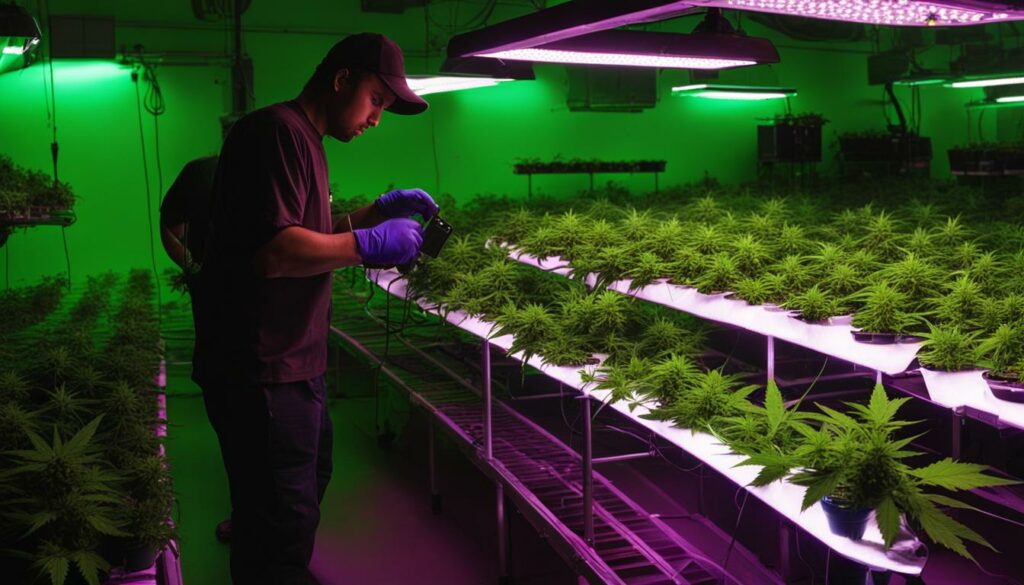
With the legalization of cannabis in many regions, indoor cultivation has become an essential component of the legal industry. It allows for the control and standardization of cultivation practices, ensuring compliance with regulations and producing safe, reliable products for consumers. The growth of indoor cannabis cultivation demonstrates the industry’s commitment to adapt and embrace technology to meet the increasing demand for high-quality cannabis.
The Indoor (and Hydroponic) Revolution
With the rise of technology in cannabis cultivation, the indoor revolution took the industry by storm in the early 1980s. One of the key innovations that fueled this revolution was the widespread adoption of hydroponics in indoor cannabis cultivation. Hydroponic gardening, which involves growing plants without soil and using a nutrient-rich water solution, proved to be an efficient and effective way to cultivate cannabis indoors.
Hydroponics offered several advantages over traditional soil-based cultivation methods. By providing plants with optimal nutrient levels and a controlled growing environment, hydroponics allowed cultivators to maximize the growth potential of their cannabis plants. This resulted in higher yields, faster growth rates, and overall better plant health.
In addition to hydroponics, advancements in lighting, irrigation, and nutrient delivery systems further contributed to the evolution of indoor cannabis cultivation. High-intensity discharge (HID) lighting systems, such as metal halide and high-pressure sodium lights, became widely used in indoor grow operations. These lighting systems provided the necessary spectrum and intensity of light for cannabis plants to thrive.
| Advantages of Indoor Cannabis Cultivation | Advantages of Hydroponic Cultivation |
|---|---|
|
|
“The indoor revolution revolutionized the cannabis cultivation industry, allowing growers to have complete control over the growing environment. The adoption of hydroponics and other advanced technologies has significantly improved the efficiency and productivity of indoor cannabis cultivation.” – industry expert
Legality as Catalyst: The Rise of Technology in Cannabis Cultivation
With the legalization of cannabis in various states, the cultivation industry has experienced a significant transformation. The changing legal status has not only brought about new opportunities but also accelerated the adoption of advanced technology in cannabis cultivation. In this section, we will explore the impact of legalization on the integration of technology and the evolution of modern cannabis cultivation methods.
Advancements in Technology
The legalization of cannabis has opened doors for innovative technologies to be implemented in cultivation practices. Growers now have access to a wide range of cutting-edge tools and systems that help optimize every aspect of the cultivation process. From automated environmental control systems to sophisticated lighting solutions, technology has revolutionized the way cannabis is grown.
“Technology has become the backbone of the modern cannabis industry, enabling cultivators to maximize efficiency, yield, and quality.”
The use of advanced technology has enabled growers to create optimal growing conditions, resulting in healthier plants and higher yields. Automated irrigation systems ensure precise water and nutrient delivery, while smart sensors provide real-time data on environmental factors. Additionally, advanced monitoring systems help maintain optimal temperature, humidity, and CO2 levels for accelerated plant growth.
The Future of Cannabis Cultivation
The integration of technology in cannabis cultivation is set to continue as the industry evolves. With ongoing research and development, we can expect to see even more innovative solutions tailored specifically to the needs of cannabis growers. From AI-driven cultivation systems to genetic engineering, the possibilities are endless.
As the legal cannabis market grows, more investments will be made in research and development, driving further advancements in cultivation technology. This will not only ensure the production of high-quality cannabis but also contribute to sustainable cultivation practices and reduced environmental impact.
| Advantages of Technology in Cannabis Cultivation | Benefits |
|---|---|
| Increased efficiency and productivity | Technology streamlines cultivation processes, reducing labor requirements and increasing overall productivity. |
| Improved quality and consistency | Precise control over environmental factors ensures consistent quality and optimal growth conditions for cannabis plants. |
| Enhanced sustainability | Technology allows for efficient resource utilization, minimizing water consumption and reducing the overall environmental impact of cultivation. |
| Enhanced data-driven decision making | Real-time monitoring and data analysis enable growers to make informed decisions, leading to better crop management and higher yields. |
The Pheno-Hunt and the Decline of Seed Genetics
The cultivation of cannabis has undergone significant changes in recent years, with a shift towards pheno-hunting and clonal propagation techniques. However, this focus on specific phenotypes has resulted in an instability of seed genetics and a decline in the natural evolution of cannabis strains. Breeders and cultivators have become reliant on selecting and cloning specific phenotypes, leading to a lack of genetic diversity and uniformity in cannabis seeds.
This overemphasis on pheno-hunting and clonal propagation has raised concerns among experts in the industry. While these techniques allow for the production of cannabis plants with desired characteristics, they also limit genetic variation and increase the risk of genetic vulnerabilities. The lack of genetic stability poses challenges for cultivators, as it can result in inconsistencies in plant performance, productivity, and resistance to pests and diseases.
“The decline of seed genetics is a growing concern within the cannabis cultivation community,” says Dr. Jane Green, a leading expert in plant genetics. “We need to find a balance between selecting desirable traits and preserving genetic diversity. This will ensure the long-term sustainability and resilience of cannabis crops.”
To address these challenges, there is a growing need for production-ready seed systems that offer genetic stability and uniformity. These seeds would provide cultivators with reliable and consistent genetics, allowing for more predictable and successful cultivation outcomes. By using production-ready seeds, cultivators can reduce the risk of genetic instability and ensure a higher level of consistency in their cannabis crops.
| Benefits of Production-Ready Seeds | Challenges of Clonal Propagation |
|---|---|
|
|
With the advancements in plant breeding, genomics, and data analytics, production-ready seeds have become a viable and attractive option for cannabis cultivators. These seeds offer cultivators the opportunity to optimize their cultivation practices, improve yield and quality, and reduce the risks associated with clonal propagation. Furthermore, using production-ready seeds eliminates the need for maintaining mother rooms, resulting in cost savings and improved margins for growers.

Using Science and Technology to Optimize Seed-Grown Cannabis
With the advancements in modern breeding practices, cannabis cultivators now have access to production-ready seeds that offer numerous advantages. These seeds are the result of scientific advancements in plant breeding, genomics, and data analytics. They provide genetic stability, uniformity, and performance similar to clonal varieties, making them an attractive option for cannabis cultivation.
One of the key advantages of using production-ready seeds is their ability to produce cannabis plants with stronger root systems, better disease resistance, and higher yields compared to clones. This is because seeds allow for greater genetic diversity and the natural development of plant traits. With a stronger root system, seed-grown plants can better access nutrients and water, leading to improved overall health and productivity.
Additionally, the use of production-ready seeds eliminates the need for maintaining mother rooms, reducing costs and labor for growers. This results in improved margins and efficiency in cannabis cultivation operations. By relying on seeds instead of clones, cultivators can allocate resources more effectively and focus on other aspects of their business.
Furthermore, the adoption of seed-grown cannabis has a positive environmental impact. Clonal propagation requires the constant production and maintenance of mother plants, which consumes significant resources. However, by using production-ready seeds, growers can reduce their environmental footprint by minimizing water and energy usage. This aligns with the industry’s increasing focus on sustainability and responsible cultivation practices.
Overall, the utilization of science and technology to optimize seed-grown cannabis represents a significant step forward in the evolution of cannabis cultivation. Production-ready seeds offer genetic stability, uniformity, and performance that rival clonal varieties. With the advantages of stronger root systems, better disease resistance, reduced costs, and a lower environmental impact, it is clear that seed-grown cannabis is becoming an increasingly popular choice for cultivators in the modern era.
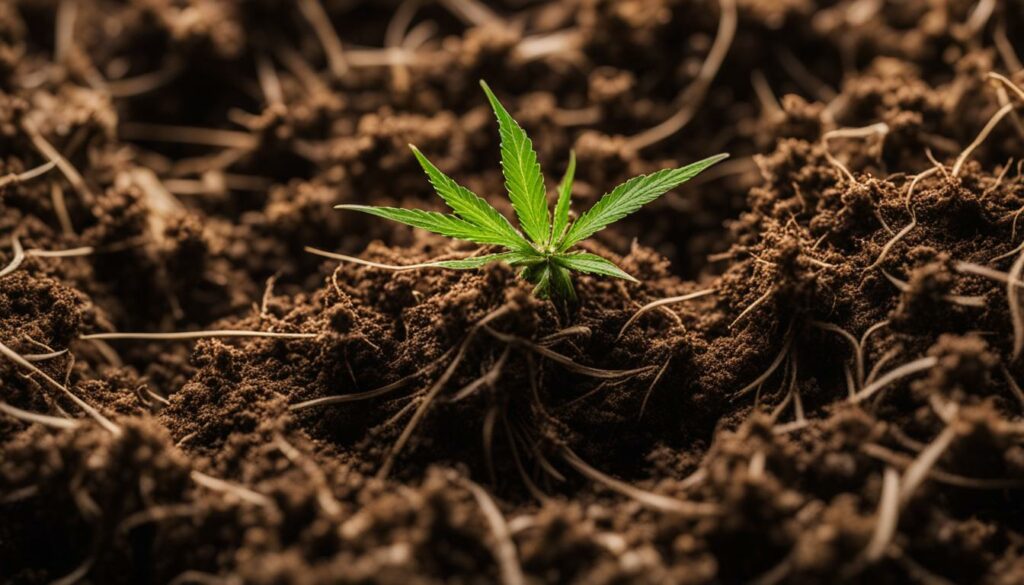
The Future of Cannabis Cultivation: Embracing Seed-Grown Cannabis
The cannabis industry is constantly evolving, and one of the latest trends in cultivation is the shift towards embracing seed-grown cannabis. As growers strive to meet the increasing demand for high-quality cannabis, many are recognizing the benefits of using production-ready seeds. Seed-grown cannabis offers a range of advantages that make it an attractive option for commercial cultivation.
One of the key benefits of seed-grown cannabis is genetic stability. Unlike clones, which are exact replicas of a single plant, seeds offer a greater level of genetic diversity. This ensures that each plant has a unique genetic makeup, resulting in improved resilience and adaptability. Seed-grown cannabis plants have stronger root systems, better disease resistance, and higher yields compared to clones.
In addition to genetic stability, seed-grown cannabis also offers a more cost-effective and environmentally friendly approach to cultivation. Growing from seeds eliminates the need for maintaining mother rooms, a practice commonly used in clone production. This reduces costs and labor associated with maintaining and monitoring mother plants. Furthermore, seed cultivation has a lower environmental impact as it requires fewer resources and energy compared to indoor cloning operations.
The Environmental Impact of Seed Cultivation
The cultivation of seed-grown cannabis has a significantly lower environmental impact compared to other cultivation methods. With the rise of sustainable practices in the industry, many growers are opting for seed cultivation to minimize their carbon footprint. By eliminating the need for energy-intensive indoor cloning operations, seed-grown cannabis reduces energy consumption and greenhouse gas emissions.
Furthermore, seed cultivation allows for outdoor and greenhouse cultivation, which utilizes natural light and reduces the reliance on artificial lighting. This not only saves energy but also harnesses the power of the sun, resulting in a more sustainable and eco-friendly approach to cannabis cultivation.
As the cannabis industry continues to evolve, embracing seed-grown cannabis is a progressive step towards a more sustainable and efficient cultivation process. By harnessing the genetic stability, cost-effectiveness, and environmental benefits of seed cultivation, growers can meet the growing demand for high-quality cannabis while minimizing their impact on the planet.
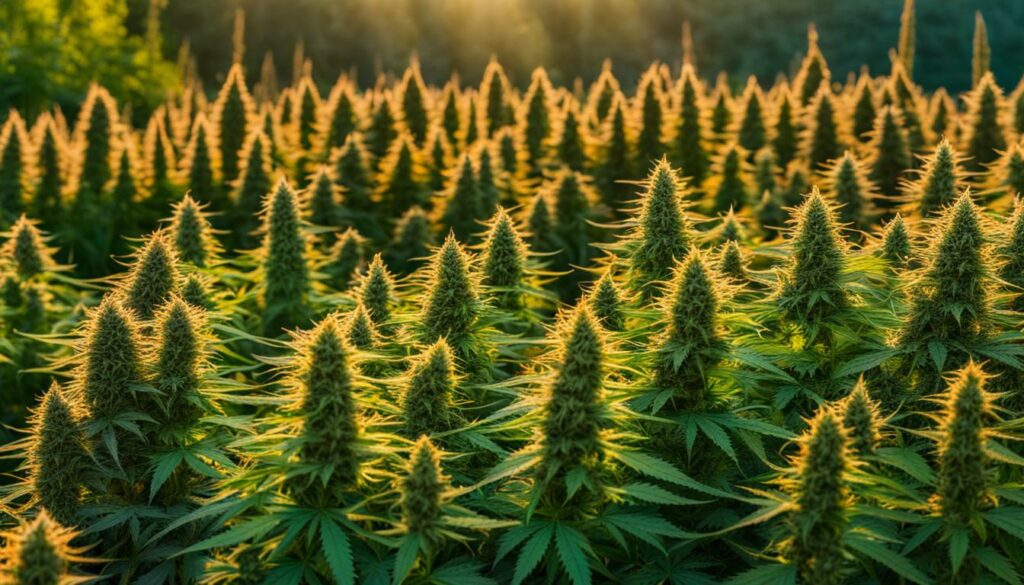
| Advantages of Seed-Grown Cannabis | Benefits |
|---|---|
| Genetic Stability | Stronger root systems, better disease resistance, and higher yields compared to clones. |
| Cost-Effectiveness | Eliminates the need for maintaining mother rooms, reducing costs associated with clone production. |
| Environmental Impact | Lower energy consumption, greenhouse gas emissions, and reliance on artificial lighting. |
| Sustainability | Utilizes natural light and outdoor cultivation, harnessing the power of the sun. |
Related Articles
- How Has Cannabis Cultivation Evolved Over the Years?
- What Are the Historical Techniques Used in Cannabis Cultivation?
- How Have Modern Technologies Changed Cannabis Cultivation?
- What Are the Major Milestones in the Development of Cannabis Cultivation?
- How Does the Evolution of Cannabis Cultivation Reflect Changing Societal Needs?
Conclusion
The evolution of cannabis cultivation techniques has been a remarkable journey, driven by historical factors, technological advancements, and changing legal landscapes. From its early beginnings to the present day, the industry has undergone significant transformations.
Looking to the future, the benefits of seed-grown cannabis are becoming increasingly apparent. By utilizing production-ready seeds, cultivators can enjoy improved genetic stability, uniformity, and higher yields. The use of seeds also reduces costs and has a positive environmental impact.
As the cannabis industry continues to evolve, seed-grown cannabis is positioned to play a pivotal role in meeting the ever-growing demand for high-quality cannabis products. By embracing the advantages of seed cultivation, cultivators can ensure the consistent production of top-notch cannabis, meeting the needs of consumers and driving the industry forward.
FAQ
What is the history of cannabis cultivation?
Cannabis cultivation has been practiced for thousands of years, primarily for industrial purposes and therapeutic or recreational use.
When did indoor cannabis cultivation become popular?
Indoor cannabis cultivation became popular in the 1960s and 70s as illegal outdoor cultivators faced increased law enforcement efforts.
What were the advancements in cannabis cultivation technology during the indoor revolution?
The widespread adoption of hydroponics in the early 1980s revolutionized indoor cannabis cultivation, along with advancements in lighting, irrigation, and nutrient delivery systems.
How has the legalization of cannabis impacted cultivation techniques?
The changing legal status of cannabis has led to the adoption of technology in cultivation, with state-licensed facilities incorporating advanced systems for efficiency, productivity, and compliance.
What is the impact of pheno-hunting on seed genetics?
Pheno-hunting and clonal propagation techniques have resulted in unstable seed genetics and a lack of uniformity, leading to a decline in natural seed evolution.
What are the advantages of using production-ready seeds in cannabis cultivation?
Production-ready seeds offer genetic stability, uniformity, and disease resistance, resulting in improved yield, reduced costs, and a lower environmental impact compared to clones.
What is the future of cannabis cultivation?
The industry is shifting towards embracing seed-grown cannabis due to its benefits in terms of genetic stability, yield, cost savings, and environmental impact.


